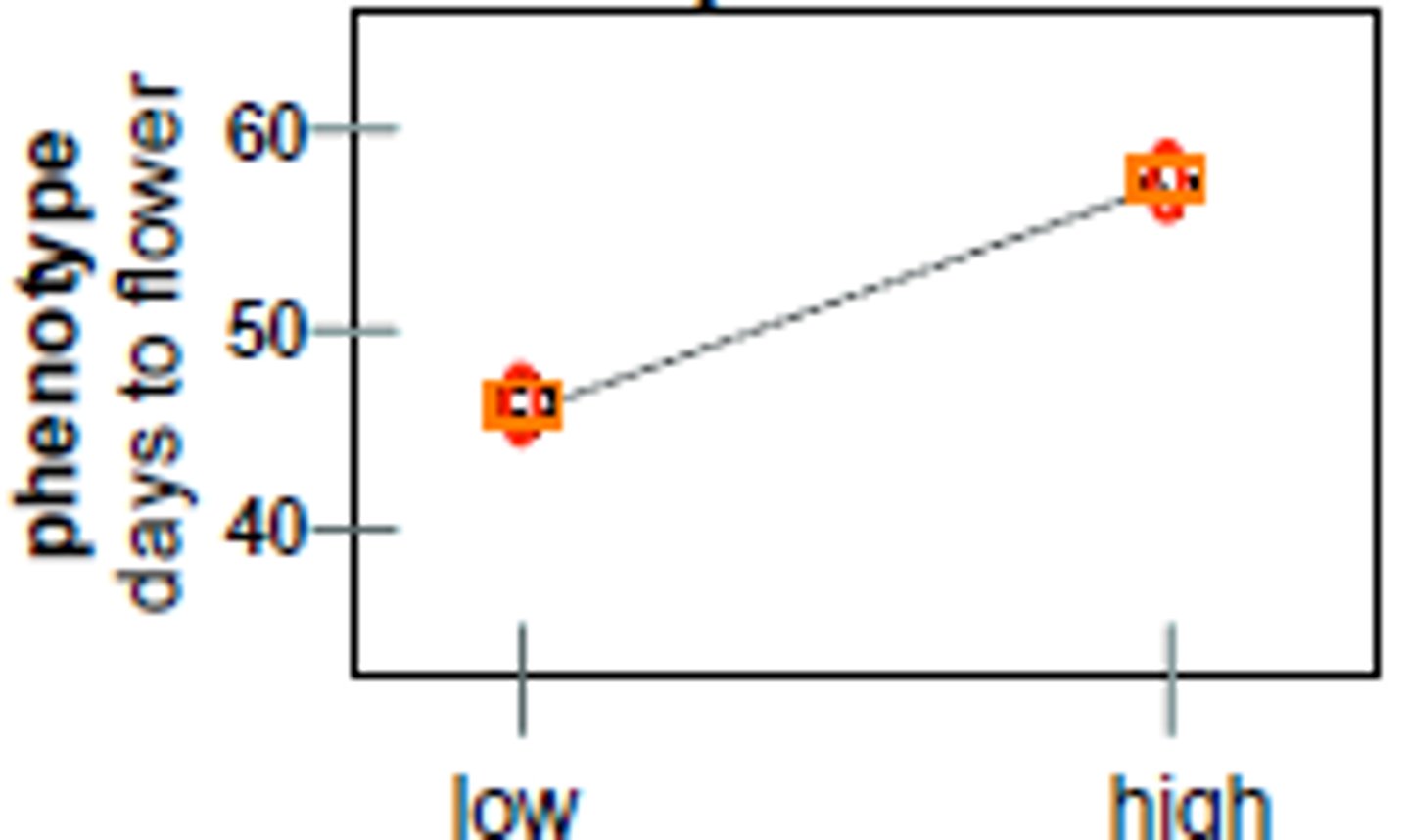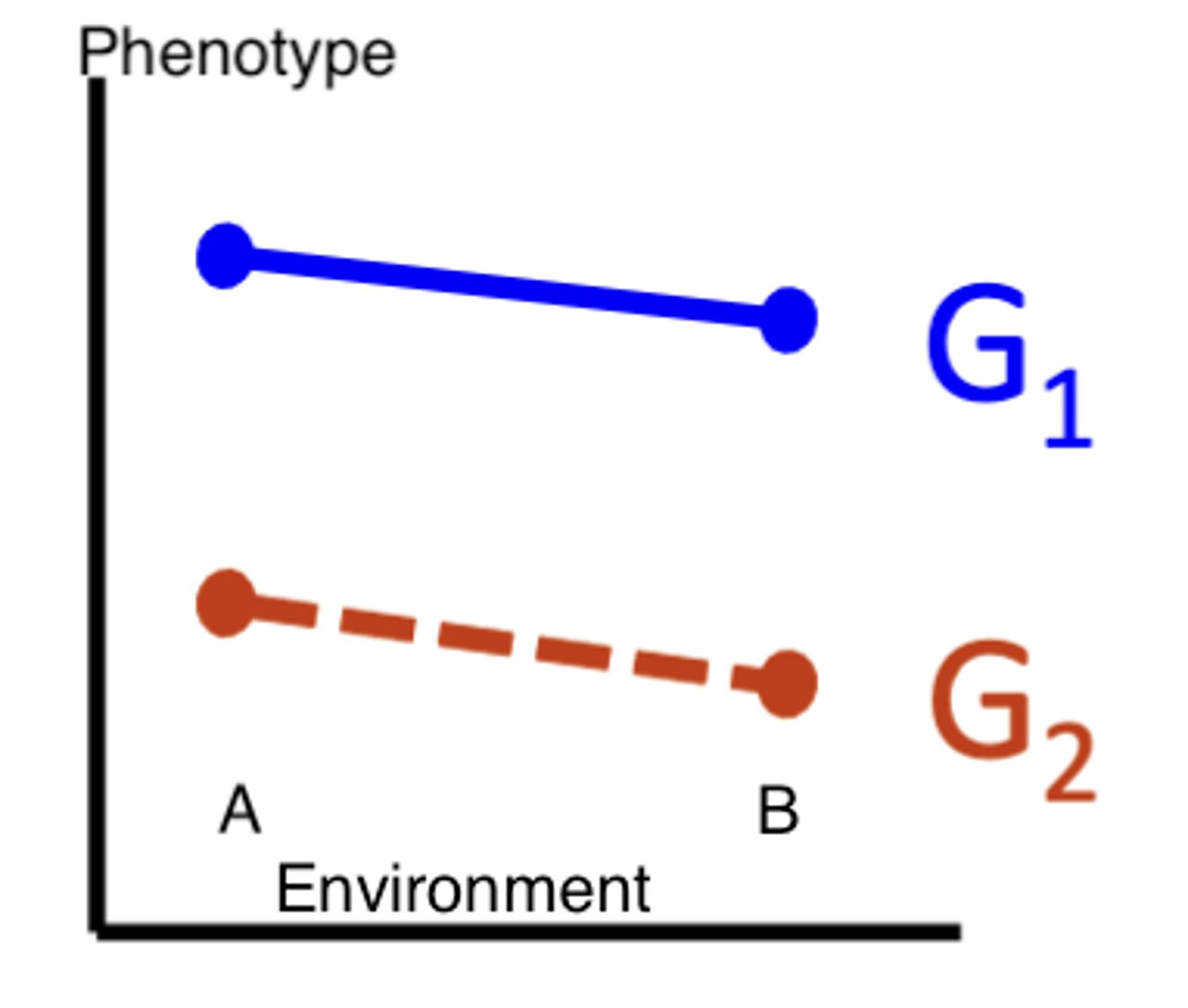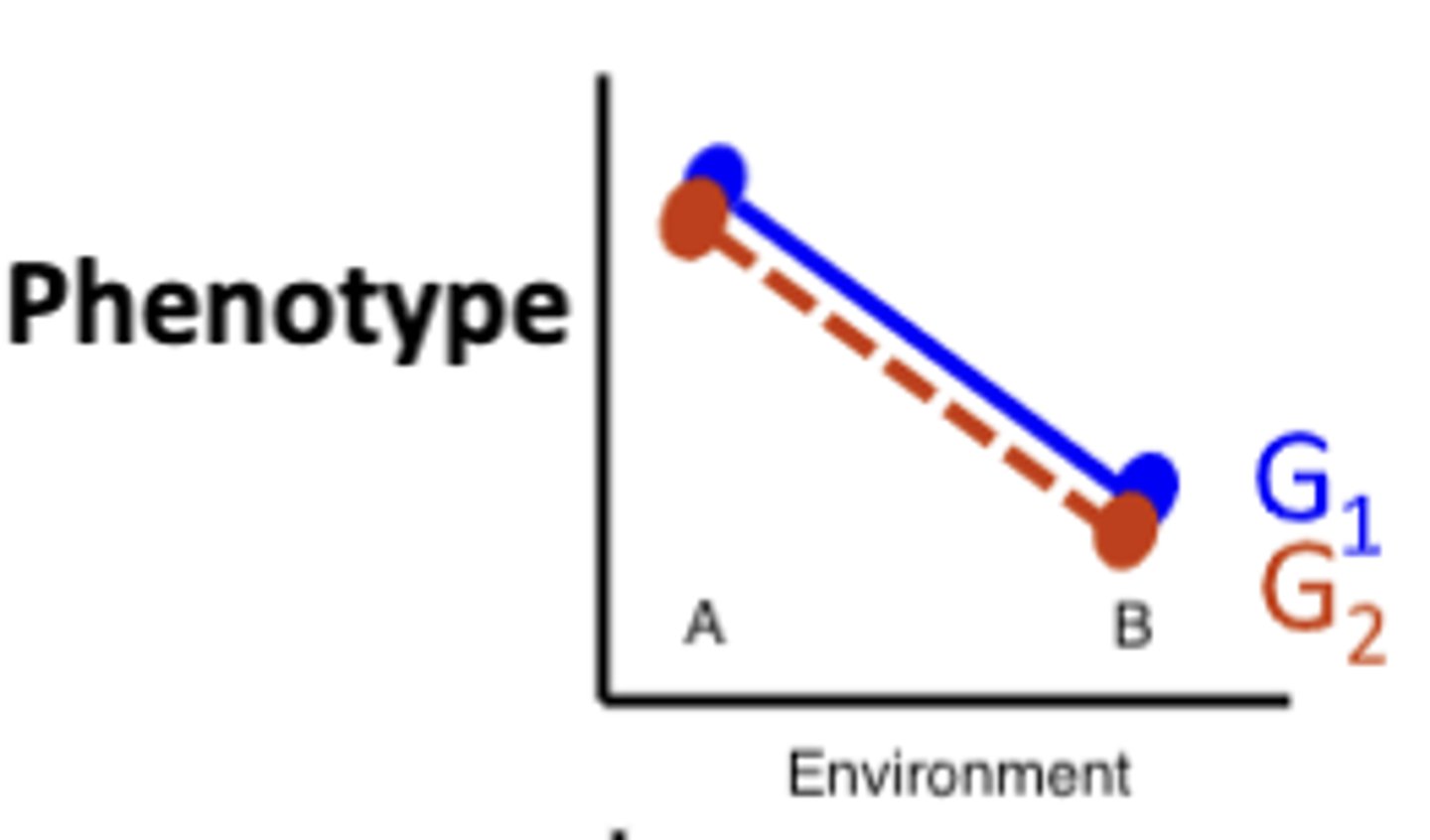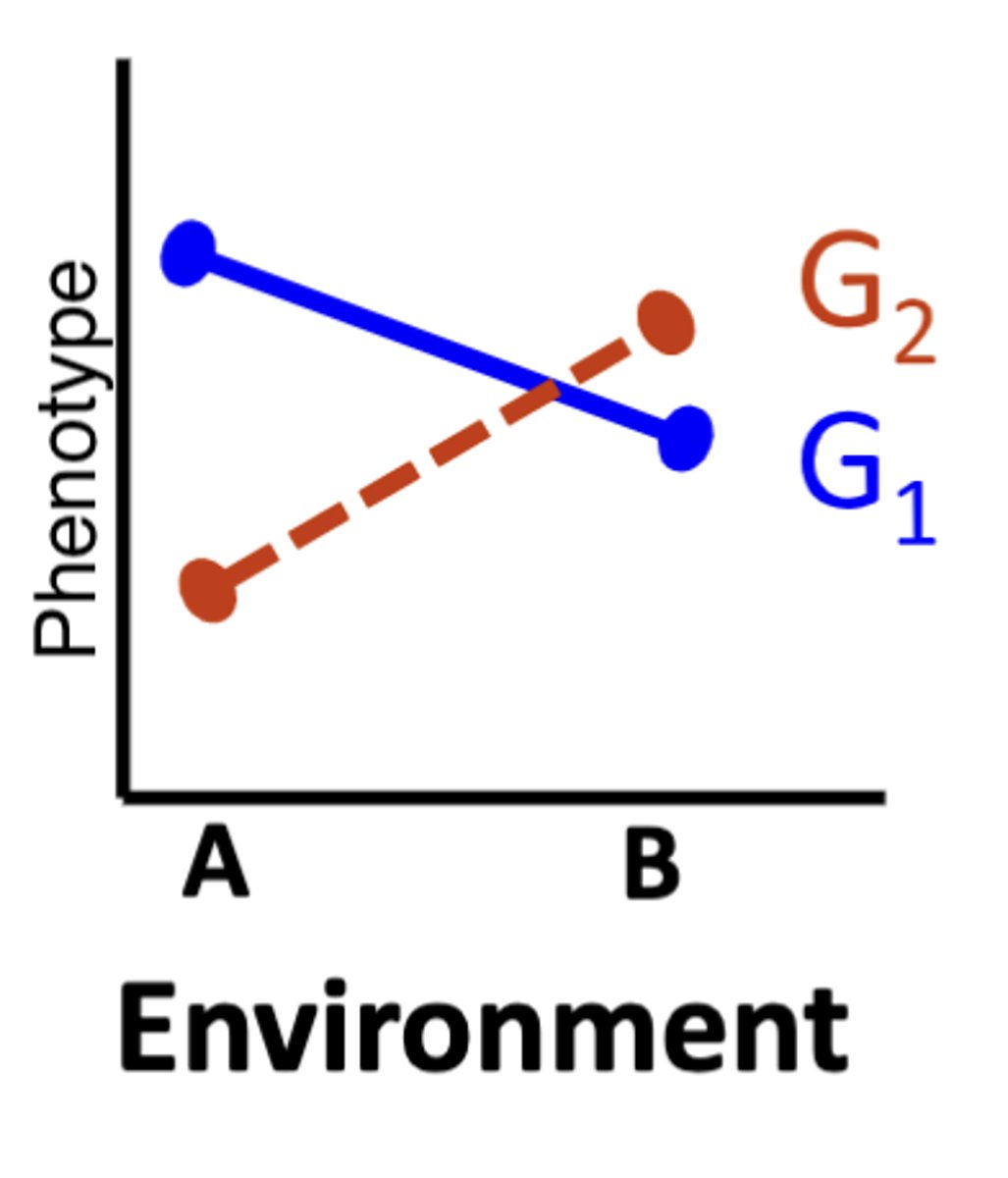BIO220-FINAL EXAM- UofT-2023 sem2
1/241
There's no tags or description
Looks like no tags are added yet.
Name | Mastery | Learn | Test | Matching | Spaced |
|---|
No study sessions yet.
242 Terms
Both of these influence phenotypes (including behaviours)
1) Genes & 2) Environment
How does natural selection effect behaviour?
Natural selection SHAPES behaviours
Enviromental effects on trait values are
plasticity
Can plasticity be adaptive?
yes, but it isn't always
the influence of _____ and ______ can be visualized with plots of the reactive norm
the influence of genes and environment
natural selection and reaction norm
natural selection shapes the reaction norm
reaction norm
pattern of phenotypes an individual may develop upon exposure to different environments
Two classes of scientific questions
1) How/what (Proximate causes)
2) Why (Ultimate causes)
How/what
What is the causal
relationship between
the organism's genes
and its behaviour?
aka PROXIMATE CAUSES
Why?
Why has this behaviour evolved and how has it changed over evolutionary time?
ultimate causes
Phenotypes reflect both
genetic and environmental effects
phenotype is:
the gene + enviroment + the genexenviroment interaction
Rover‐Sitter Polymorphism
the occurrence of two or more different forms or morphs within a single species.
These different forms can have different physical characteristics, such as coloration or shape, or different behavioral traits, such as mating behaviors or feeding habits.
within population variation in a behaviour:
Rover/Sitter Polymorphism
Rover/Sitter Polymorphism: YEAST
ROVERS: move more than sitters
Rover/Sitter Polymorphism in GENES
example: the foraging for gene (A-rover, vs C-sitter in sequence)
Rover/Sitter phenotypes
Rover is dominant
Cost of being a rover/sitter
expend more energy looking for food/find less food
benefit of being a sitter/rover
find more food/conserve energy
Evolution by natural selection requires
- Variation in a trait
• Genetic basis for the trait
• Variation in fitness for the trait
Can behaviours evolve?
Behaviours have lots of variation
• Behaviours have a genetic basis
• Different behaviours have different fitness
CONCLUSIONS: rover‐sitter
A single major gene (for) underlies the rover/sitter polymorphism•
The rover allele (forR) is dominant to the sitter allele (fors)
• Both larval and adult behaviours are affected by these alleles
• Elements of the environment (e.g., food deprivation) also affect these behaviours
• Homologous genes exist in bees, mice, and humans
R/S: Genotype effect:
being a rover vs sitter
R/S: environment effect
hours of food deprivation
Plasticity can be:
an environmental effect on the phenotype of a single individual
OR
• an environmental effect on the phenotype of genetically‐identical individuals
VISUALIZING the REACTION NORM

reaction norm describes
the effect of some environmental variable on the phenotype of a single genotype
Reaction norm: Z=G + e
LARGE GENETIC EFFECT
small environmental effect

reaction norm: Z = g + E
small genetic effect, LARGE ENVIROMENTAL EFFECT

reaction norm: Z = G + E + GXE
complex gene x environment interaction

Evolution of Reaction Norms: population mean reaction norm
pic in notes
Genetic variation and evolution of reaction norms: DAPHINIA
Daphnia populations with a selective history of predation risk have evolved to avoid habitats with high risk of predation
sexual dimorphism
The phenomenon in which individuals ofdifferent sexes of the same species havedifferent genotypes and/or phenotypes
examples of Sexual dimorphism
- differences in gametes (anisogamy)
- differences in reproductive organs
- other sex-associated phenotypic differences
MALES CHROMOSONES
Genetic male: XY (humans), ZZ (birds)
FEMALE CHROMONES
XX (humans), ZW (birds)
Anisomgamy
unequal sized gametes
gametic males
sperm producers
gametic females
egg producers
sexual dimorphism can be seen in:
- size
- armaments
- ornaments
sexual selection
a subset of natural selection where:
Sexually selected traits function to enhance mating success
FITNESS =
natural selection (survival + reproductive rate)
+
sexual selection (number & quality of mates)
two types of sexual selection
intrasexual selection (competition)
intersexual selection (choosiness)
What determines thestrength of sexual selection?
number and quality of mates
operational sex ratio
the ratio of male to female individuals who are available for reproducing at any given time
What determines the operational sex ratio?
Anything that alters the receptivity of one sex to mating, or their potential for remating, can alter the operational sex ratio
What drives sex differences in potential reproductive rates (PRR)?
EGG- resource rich and large, but few
Sperm: inexpensive, many, small
Parental Investment Theory
- by Robert Trivers
- Each offspring in these species is produced from a
sperm and an egg
- Members of the sex that invest little in off spring will compete among themselves to mate with members of the sex that invest more in offspring
sperm bearers compete against each other to mate with egg bearers
IMPLICATIONS OF Trivers: If the ONLY investment in offspring is gametes, then:
- Fitness limited by access to fertilizable gametes
- Fitness limited by access to resources
IMPLICATIONS OF Trivers- PREDICTIONS:
Competition: between males for mates
Choosing: among males for mates
If males are limited by access to mates,and females aren't (as much)
refer to image
INTRAsexual selection
Competition
- often male-male competition
INTERsexual selection
Choosiness
- often females choosing
Intrasexual selection:competition FORMS:
pre-copulary (# of copulations)
post-copulatory (success of copulations)
Manifestations of competition: pre‐copulatory
- fighting behaviour
- social status
- territoriality
Manifestations of competition: post‐copulatory
- mate guarding
- copulation duration
- sperm removal
- sperm plugs
- anti-aphrodisiacs
Alternative reproductive strategies: how is variation maintained in a population?
- rock-paper-scissors
game in nature
- observed in side-botched lizards
- strategies have a genetic basis
- orange vs blue vs yellow
- vary in frequencies
Side‐Blotched Lizard Strategies- ORANGE
- Aggressor
- defend large territories
- extremely aggressive towards all males
Side‐Blotched Lizard Strategies- BLUE
- guarder
- defends smaller territories
- detect and root out yellow males
Side‐Blotched Lizard Strategies- YELLOW
- sneaker
- sneaks up on orange males
- mimics throat colour and behaviour of receptive females
Side‐Blotched Lizard- ROCK PAPER SCISSOR GAMES
ORANGE: attack and defeat blue (ADB)
Blue: detect and defeat yellow (DDY)
Yellow: female mimicry and fools oranges (FFO)
Side‐Blotched Lizard PREDICTIONS:
If orange is common, yellow will increase
If blue is common, orange will increase
If yellow is common, blue will increase
SIDE botched lizards: RESULTS
negative frequency dependent selection
negative frequency dependent selection
The fitness of a strategy is highest when that
strategy is rare in the population.
DARWINS ornament puzzle
solved by sexual selection
Mate choice
Any trait (behaviour, morphology) of one sex that biases the mating success of the other sex toward the "preferred" type
Mechanisms of choosing
- visual cues (birds, fish, cricket)
- acoustical cues (cricket, birds, frog)
- tactile cues (Sierra doem spiders)
- olfactory cues (mouses, bees, cockroach, moth)
Tail lenght experiment predictions
BEST:
L > N
WORST
S > R
tail lenght experiment RESULTS:
TAIL LENGHT ONLY INFLUENCES FEMALE CHOICE
RESULTS: ACOUSTIC
females prefer complex calls
Puzzle of choice: why are elaborate and behaviours common
- they are preferred by mates
- there is selection for elaboration
why are elaborate preferred: HYPOTHESIS
direct benefits:
involve direct natural selection on the individual making the choice. Chooser produces more offspring
indirect benefits:
involve genetic benefits to offspring of the individual making the choice. Chooser's offspring are of higher genetic quality (i.e., are more fit)
female choice: direct benefits
- choosiness based on resources (e.g., parentalinvestment) rather than the apparent male attributes
- Male trait is indicator or badge of those resources
Selection for male traits as indicators of resource provisioning or other direct benefits
- territory quality
- defense
- parental care
- lack of parasites (STIs)
FEMALE CHOICE-Indirect benefits:
- females prefer male traits which indicate high genetic quality (good genes)
- if indirect benefit exists then offspring from mating with preferred males should have higher fitness
BROADENING our view on parental investment (Trivers):
When males invest a lot, relative to females, then we predict:
- male choice
- female/female competition
Pipefish sex roles and mating system
- males success limited by brood pouch
- female limitted by access of brood pouch
- females compete for mates
- sexual selection on
1) female size
2) ornamentation
Environmental effects on relative PI and mate choice in Katydids
- decline in ambient resources equal decline in male availability
- predictions at low resources:
male choice of females
female/female comp.
Experiment: in vitro fertilization: How do alternative reproductive strategies influence female choice?
Parental males offer a direct benefit to females: defend nests, provide care to young
&
Satellite and sneaker males offer an indirect benefit to females: "good genes" lead to offspring growing faster, surviving better
But, parental males adjust their level of care when they sense offspring have been sired by other males.
Experiment: in vitro fertilization: RESULTS
female bluegill sunfish face a trade-off in mate choice:
direct benefits: good care
indirect benefits: good genes
Sexual selection may favour ..
- traits with direct benefits
- traits with indirect benefits
SOCIAL BEHAVIOUR
the interaction with - and responses to - otherindividuals of the same species
social behaviour- cooperation
Behaviour that if adopted by two (or more)individuals, benefits both
social behaviour- altruism
Behaviour increases another individual's fitness(survival or reproductive success) at a cost to one's own fitness
cooperation explained by natural selection
shared direct benefits
- cooperation generates IMMEDIATE benefits
ex: cooperative breeding
game theory
- some players
- set possible stratigies
- pay off schedule for playing A vs B, and all B and B
Hawk-Dove game
context between 2 to obtain a resource
2 stratigies
hawk: aggresive
dove- peace
Prisoner's Dilemma
- best strategy is "tit for tat"
- evolution of reciprocity
Prisoners dilemma- tit for tat
I. Cooperate on the first encounter• 'nice' to start
II. Copy your opponents last move thereafter
• 'retaliate' if partner cheats
• 'forgive' if partner has cheated in the past,
but then starts to cooperate
cooperation (tit/tat/iterated) example:
predator inspection
primer on relatedness
more likely to cooperate if related
Altruism directed toward a random individual
non-altruists do best
Altruism directed toward a genetic relative
altruists might do best
Hamilton's rule
when C < r x B
C = cost to the altruistic party
r = genetic relatedness
B = fitness benefit to recipient of altruism
we expect greater altruism to be directed towards closer genetic relatives (br > c)
Fruiting body production in the social amoeba:
Social amoebae discriminate kin from non‐kin and co‐aggregate more with genetically similar individuals!
CONFLICT:
occurs when offspring and parent weight costs/benefits differently
Parent‐Offspring Conflict
- Offspring begs for food
- Parent provides the food
parent-offspring conflict: trade off
fitness of focal offspring vs number of future offspring
ffspring should maximize
B(p) ‐ ½ C(p)
Parents should maximize
½ B(p) ‐ ½ C(p)